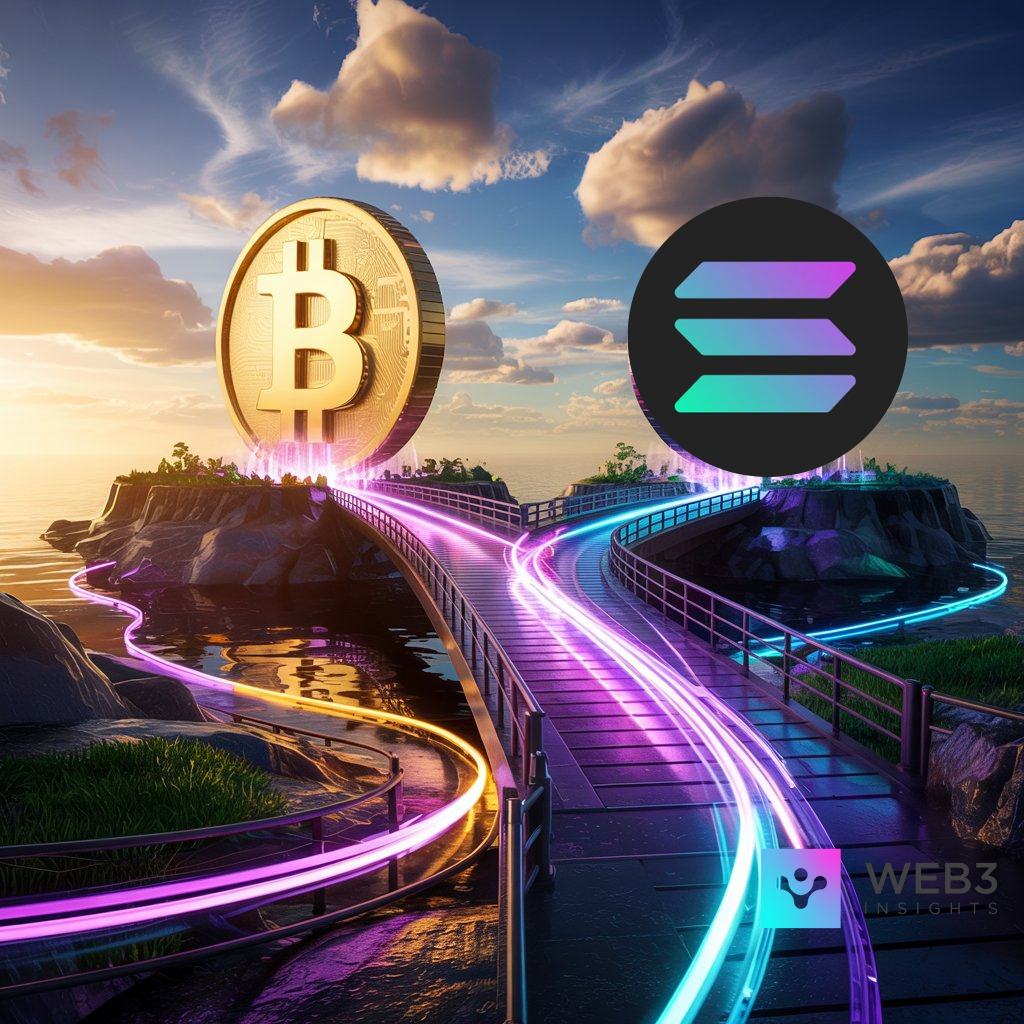Bitcoin on Solana is not just a trend, it’s a fundamental infrastructure shift that enables BTC to become more than just a passive asset. Through bridging and wrapping. Bitcoin can be represented as a token on Solana, allowing it to move at Solana speed and plug into high-performance decentralized applications. This article explains how that happens and why it’s a big deal.
Why Does Bitcoin Need to Be Bridged?
Bitcoin lives on its own blockchain, completely separate from Solana and other smart contract-enabled chains. While that’s great for keeping it secure and simple, it makes it nearly impossible for BTC to participate in modern crypto use cases like lending, yield farming, or decentralized trading.
To fix this, developers use bridging systems, which are protocols that let you lock BTC on its native chain and issue a version of it on Solana. This version is often called “wrapped BTC,” and it’s pegged 1:1 to the original coin. Now, Bitcoin isn’t just something you hold, it’s something you can use.
What Does “Wrapped BTC” Mean?
Wrapped BTC is exactly what it sounds like: a representation of real Bitcoin that’s been “wrapped” in another blockchain’s format. The original BTC gets locked into a smart contract or custodian vault, and in return, you receive a wrapped version on another chain like wBTC on Solana.
This wrapped token acts as a stand-in for the real thing. You can transfer it, trade it, lend it, or provide it as liquidity. And whenever you want to “unwrap” it, the system burns your wrapped token and releases the actual BTC back to you.
Crucially, wrapping doesn’t change the value or essence of BTC, it just extends its reach.
Solana’s Speed Changes the Game
On Ethereum, using wrapped BTC often comes with high gas fees and sluggish execution. On Solana, everything moves faster. We’re talking sub-second finality and near-zero fees.
This matters because it makes using wrapped BTC actually viable for day-to-day DeFi activity. Want to stake BTC in a lending market like Kamino? No problem. Want to use BTC as collateral on MarginFi? It’s instant. Want to swap BTC on a DEX like Jupiter? Done in seconds, without your wallet taking a hit.
Solana turns Bitcoin from an “HODL-only” asset into something that can participate in real-time financial systems.
How the Bridging Process Works
Let’s say you have 1 BTC and you want to use it on Solana. Here’s what happens:
- You send your BTC to a bridge or protocol that supports Bitcoin-Solana transfers.
- The protocol locks your BTC securely, either using a smart contract or a multi-sig custodian.
- A new token like wBTC is minted on Solana and sent to your Solana wallet.
- You can now use wBTC across Solana’s DeFi ecosystem.
- When you’re ready to exit, you redeem your wBTC, and the protocol unlocks your original BTC.
It’s like teleporting your BTC into a new universe, without ever compromising its integrity.
Zeus Network: Building a Trustless Bridge
One of the most promising players in this space is Zeus Network, a permissionless protocol focused on Bitcoin on Solana interoperability. Unlike many bridges that rely on centralized intermediaries, Zeus is developing a trustless system, meaning users don’t have to place their faith in a single company.
Zeus uses cryptographic proofs, validator networks, and decentralized oracles to verify deposits and mint zBTC (symbol for wrapped Bitcoin on Zeus), securely and transparently. This drastically reduces risk and increases confidence for users who want to bring BTC into Solana without worrying about hacks, rug pulls, or custodial mismanagement.
Zeus is still early in its roadmap, but its focus on decentralization and permissionless access aligns with the ethos of both Solana and Bitcoin. As adoption grows, it could become the standard bridge for Bitcoin on Solana.
Why Does This Matter?
Bridging Bitcoin into Solana isn’t just about porting value; it’s about unlocking utility. With BTC wrapped on Solana, users gain access to a much wider range of opportunities. It becomes possible to participate in DeFi ecosystems in a way that was previously off-limits to native BTC. For instance, holders can now put their Bitcoin to work through yield farming and lending protocols, something that simply isn’t feasible on the Bitcoin network itself.
Wrapped BTC can also be deposited into liquidity pools, where it earns trading fees while supporting decentralized exchanges. Instead of just sitting idle in a cold wallet, Bitcoin can now contribute to Solana’s high-speed, capital-efficient markets.
Moreover, users can use BTC as collateral to take out decentralized loans, accessing liquidity without selling their assets. And thanks to Solana’s low fees and near-instant finality, BTC can seamlessly plug into a variety of cross-chain applications and fast-paced DeFi primitives that depend on responsive infrastructure.
This opens up an entirely new category of use cases for Bitcoin holders, especially those who want to stay long BTC but also earn more from it.
And let’s not forget developers. With BTC now usable on Solana, builders can create new protocols and applications that leverage Bitcoin’s liquidity, without having to deal with Bitcoin’s technical constraints.
Conclusion: From Static to Dynamic
Bitcoin has always been the anchor of crypto, but until now, it’s been a static one. With bridging and wrapping, especially on Solana, BTC is becoming dynamic. It can move, interact, earn, and evolve.
The infrastructure isn’t perfect yet. Bridging comes with risks, and decentralization is still catching up in some protocols. But the direction is clear. Bitcoin on Solana is happening, and it’s not just a novelty. It’s a step toward a more connected, composable, and usable crypto economy.
As bridges like Zeus Network mature and adoption grows, expect to see BTC liquidity become a core pillar of Solana DeFi. The faster Bitcoin moves, the faster the entire ecosystem can grow.








